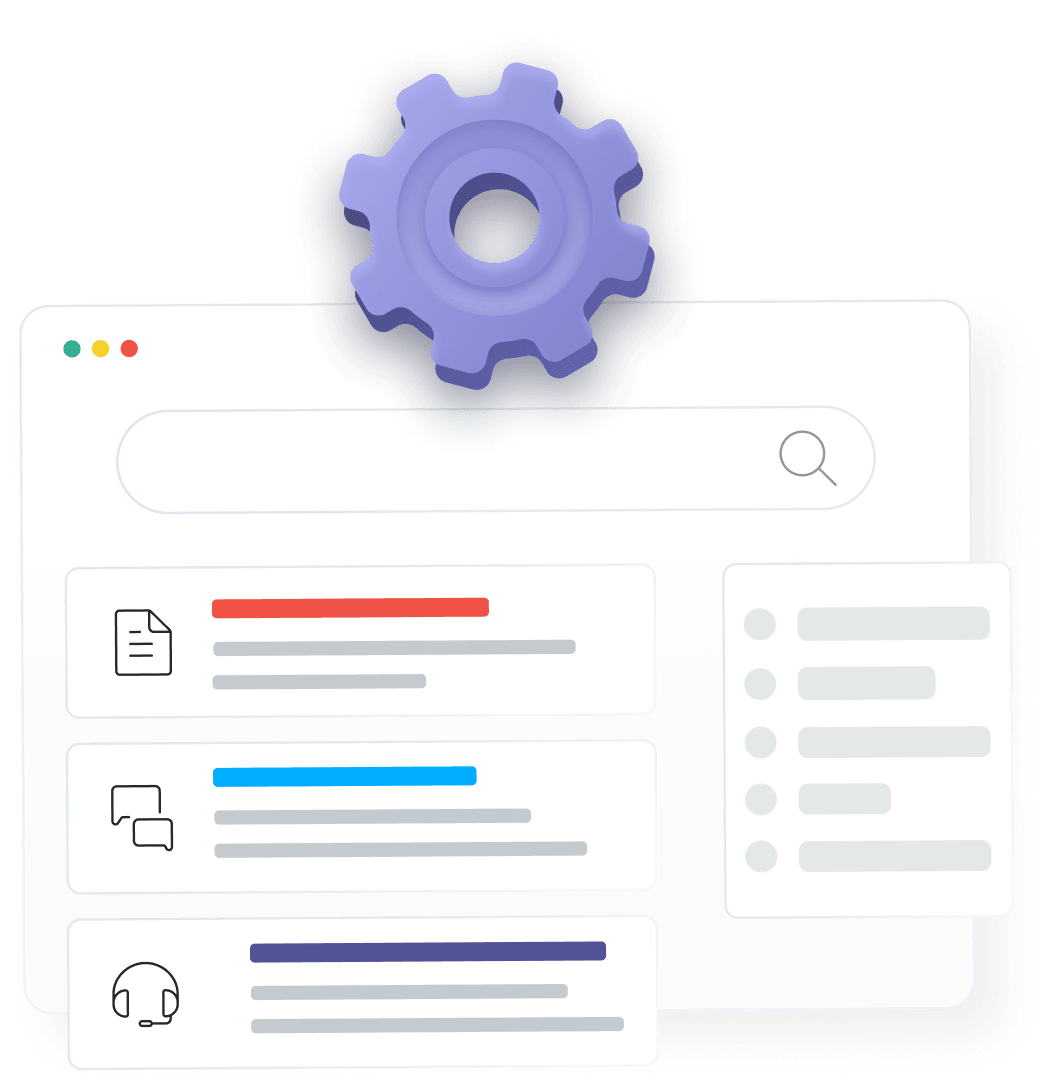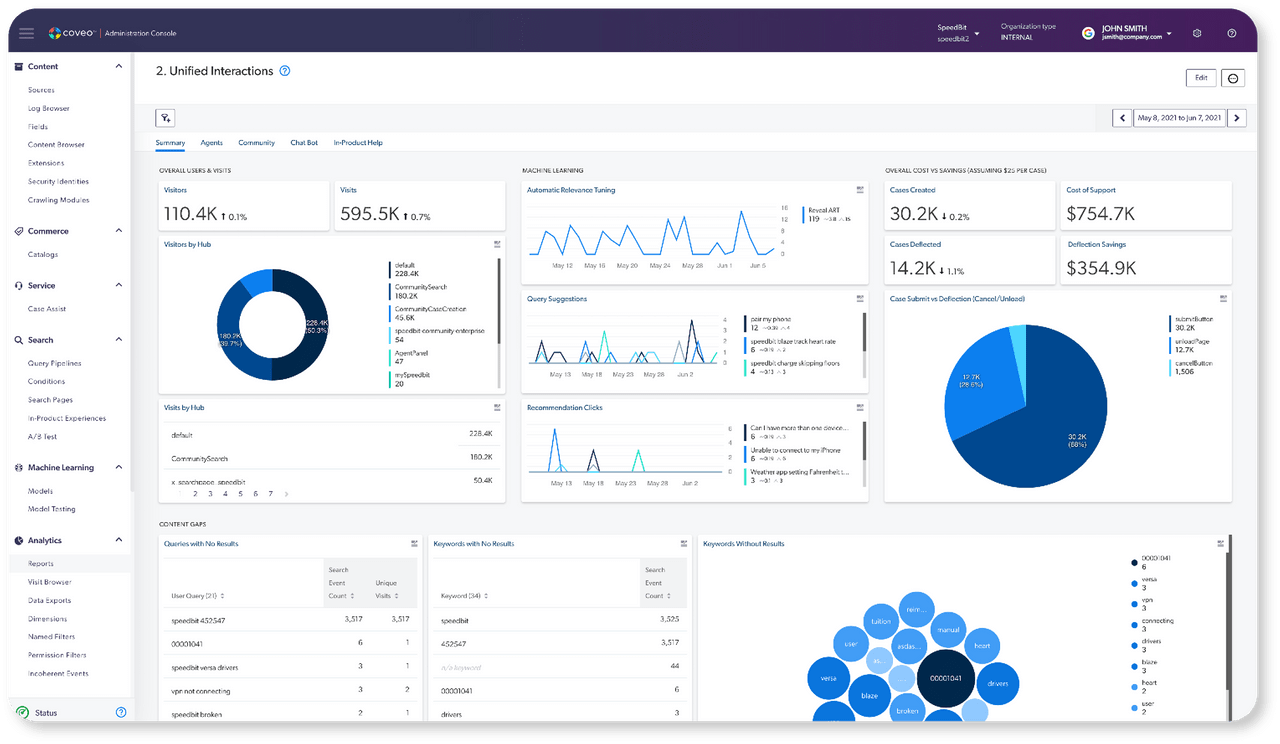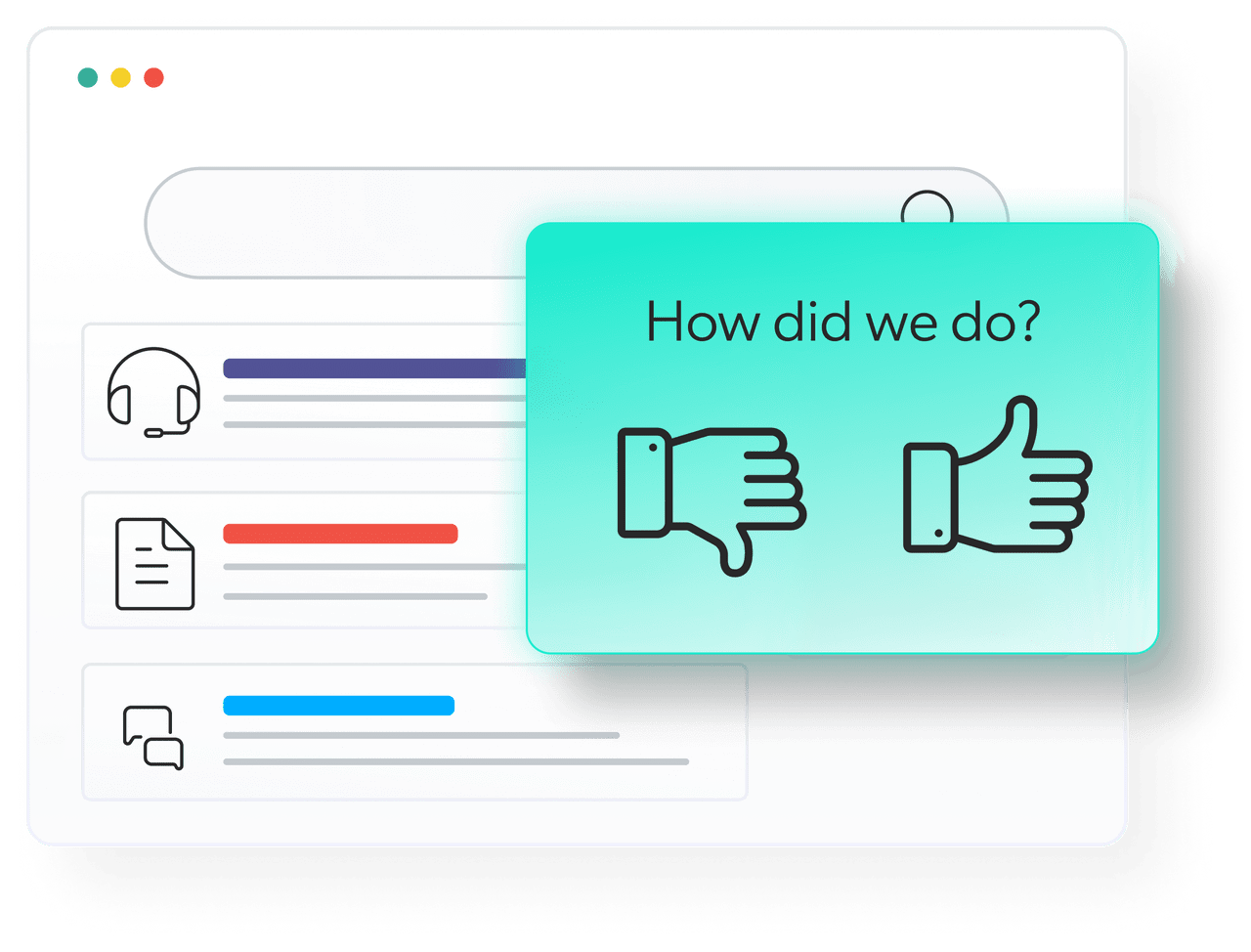One way or another, businesses are coming around to the necessity of digital transformation. They’re attempting overhauls of the customer experience that can be comprehensive, compendious, and remarkably compressed.
Yet the aim of these efforts must be consistent and crystal clear.
“The customer experience needs to be omnichannel, and brands need to be where their customers are, when their customers need them, while taking time to understand those customers along the way.” That’s how Annette Franz, Founder and CEO of CX Journey Inc. and a Certified Customer Experience Professional (CCXP), characterized the goal to be attained for digital transformation initiatives.
Franz was speaking on a recent Coveo webinar, Critical Components Of Outstanding Customer Experience. She was joined by Debbie Shutto, Director of Knowledge Management at Finastra. Together, Franz and Shutto prioritized the many moving parts of customer experience, including:
- What exceptional customer experience actually is.
- Where customer support and customer service fit in.
- The requisite components of strong customer experience.
- How knowledge management (KM) and artificial intelligence (AI) fit in.
- What customer experience might look like in the coming year.
First, What Customer Experience is Not
Though we’re all highly invested in the customer service aspect of customer experience, let’s take the blinders off for a moment.
Customer service does not equal customer experience.
Instead, service and support comprise one of many interactions under the customer experience umbrella. And there are many, including:
- Product research
- Purchase process
- Training and onboarding
- Post-purchase customer service and support
- Renewals, cancels, and returns
“In the end, service is what happens when the experience breaks down,” says Franz. “If we get the experience right, then we take the weight off the contact center. If we get the experience wrong, customers will be calling customer service.”
As for a working definition of customer experience, Franz sums it up thusly: “customer experience is the sum of all interactions that a customer has with a brand over the life of their relationship with their brand. More importantly, the feelings, emotions, and perceptions they have about those interactions.”
So, what goes into making that definition of great customer experience a reality?
6 Pivotal Components of Exceptional Customer Experience
Even a cursory survey of the customer experience landscape will reveal a fundamental thread that weaves its way throughout: effort. How easily, in a moment of need, can customers (and the employees that serve them) get what they need? And what happens when the effort required is too much?
Across all of the six areas of customer experience that Franz and Shutto highlight, reducing customer effort is a primary objective.
1. The Self-Service Component
The amount of effort required to self-serve — to find answers on one’s own — is directly tied to a customer’s perception of their overall experience. Just the other day I tried to troubleshoot an issue with my cable provider (yes, I still have one of those). Their knowledge base was impossible. The chatbot was an empty-headed robot. In the end, I had to call customer service.
And I’m still this close to switching providers for good.

The stakes are high, as are customers’ expectations around great customer service. Be there or be square, as the saying goes. With respect to self-service, “there” can mean a lot of things:
- Google search
- Support chatbot
- Support request form
- Knowledge base
- Community/support forum
- In-product help
Debbie Shutto of Finastra recalls how the company’s three siloed knowledge sources made it so difficult for customers to find answers.
“It was terrible,” she recalls.
So she and her team built the Finastra Customer Success Community, a go-to support portal in which one search returns unified results from all of those knowledge sources combined.
2. Knowledge Management
Ah, knowledge management. Old reliable. At least it used to be.
Now knowledge management is back in the spotlight, thanks in part to the needs of hybrid working environments. Increasingly, enterprises are figuring out that, without mature knowledge management programs, other parts of their customer experience will suffer.
Shutto puts it plainly: “If we have the info, our customers and employees ought to be able to find it.”
Indeed, the self-service knowledge base is the #1 channel for Finastra. It helps customers self-serve. It extends content into Finastra’s new customer success community. It even ties into customer service agent and employee experience.
While plenty goes into the knowledge management discipline, Finastra in particular has invested in a culture of creating valuable — and reusable — content. To this end, they’ve implemented Knowledge-Centered Service (KCS) best practices.
“KCS is all about structuring content so it’s easy to follow. We make sure our content adheres to that structure to make sure our clients can solve problems on their own.”
3. The Customer Service Agent/Employee Experience
In our zealous devotion to customer-first experiences, let’s not forget the people making it happen behind the scenes. The better equipped agents and internal employees are to access knowledge, self-serve, and collaborate, the better they’ll serve customers.
“Our customers are able to find what they need quickly and get back to using their Finastra products,” says Shutto. And when cases are submitted, agents get the same experience in Service Cloud.” That means a unified search experience for support engineers. It also means pre-filtered search results and recommendations based on case subject and product.
“For non-support staff,” continues Shutto, “we have a Coveo enhanced search tab so that success managers, account execs, and product managers have the same search experience when they’re working with customers and clients on their own day to day.”
4. AI and Personalization
“AI can really help to facilitate the customer experience. It makes it more personalized, which is what customers want and expect,” says Franz.
At its best, AI and machine learning can personalize content, recommendations, and journeys on a one-to-one basis. It can automatically bring together data sources, map the most useful ways forward, and serve those up to customers.

It’s not easy, of course. Take ecommerce. To properly personalize ecommerce experiences using AI requires a lot of different data:
- Personal
- Contact
- Transactional
- Onsite behavioral
- Offsite behavioral
To name a few. The same goes for exceptional customer service and support. Yet both Franz and Shutto remain convinced about the continued role that AI-powered personalization will play in customer experience.
5. Analytics
Every customer interaction creates data points, whether you pay attention to them or not. Full stop. Within the context of customer experience and, more specifically, service and support, analytics can reveal a lot about where customer experience is now, versus where it needs to go.
Debbie Shutto’s team at Finsatra uses analytics to identify gaps in their documentation. They look at trending topics, opportunities for consolidation, or ways to improve relevance.

“We’re able to look at search queries that return no results and fill those gaps, and publish a knowledge base article that same day,” says Shutto. If her teams see a high-volume search term with no search results, for example, they flag it and create content for it straightaway.
We’ve seen customer experience pros like Shutto use analytics to fix major kinks in the customer journey, too — including improvements to the product itself.
“We use a customer self-service metric within our Coveo insights, which allows us to measure how well we are doing from a customer self-serve perspective,” says Shutto. These metrics directly inform how and where Shutto’s team directs its efforts.
6. Feedback
Though it might not be as flashy as AI, customer feedback remains a lifeline of customer experience. Both Franze and Shutto agree that customer-experience-focused organizations must take the time to not only listen to customer feedback, but use that information to design better experiences.

“When feedback comes in, we’re acting on it immediately,” says Shutto. “If it’s a thank you, we send an email to the client to thank them. If it’s a problem, we’ll follow up with a subject matter expert and get the customer an answer or connect them to a support engineer. Then we circle back around and make sure we’ve updated that article and republished it.”
Even exceptional customer experience is a house of cards if most customers feel like they’re speaking into the void. The solution? Build mechanisms to not only collect customer feedback, but to close the feedback loop and respond.
Finally, Where is Customer Experience Headed?
One thing we know is that things are changing fast.
“We have to listen to customers to stay ahead of evolving trends and expectations,” says Franz. “AI and automation are not going away. Personalization and hyper personalization are here to stay. More than anything, though, it’s people. People are in the driver’s seat. If brands don’t have the foundation right, they’ll struggle with these trends.”
Both Franz and Shutto note a few areas to keep an eye on with regard to the future of customer experience:
- Predictive support: help customers get out ahead of issues long before they become issues
- In-product contextual support: bring personalized help content into the products themselves
- Agility: the ability to quickly spin up needed features or experiences that customers are demanding
All of these are compelling angles to consider. They all depend on getting the experience right, too. And that experience needs to be built around the customer.
“We need to put the customer at the center of a digital experience,” says Franz. “If they’re not, who are we designing this experience for?”
Check out the whole conversation on-demand.
Dig Deeper
Want actionable insights for designing your self-service customer experience? Check out our 6 Tips for Tailoring Your Customer Support Experience for Self-Service.
Looking for the latest customer service trends? Check out our most recent research, the 2022 Service Relevance Report.


